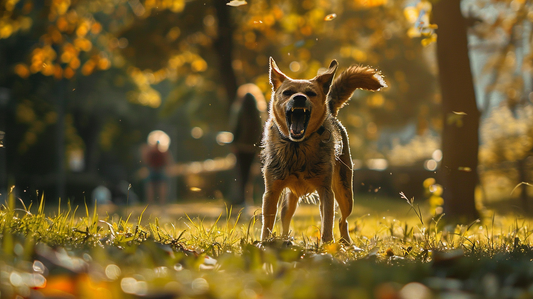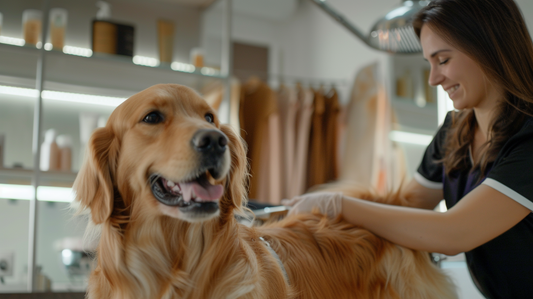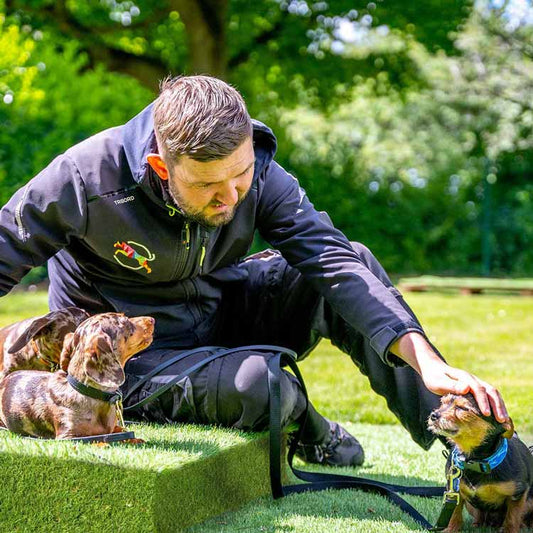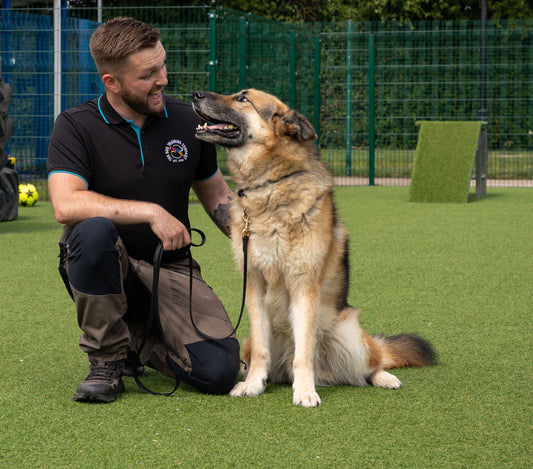
How Does Pressure Work In Dog Training? - The Hidden Gem of Dog Training
Introduction
Dog training, like any worthwhile endeavor, requires time, patience, and yes, sometimes even a little bit of pressure. The phrase "you can't make a diamond without pressure" is a relevant analogy for the dog training process. In the 15th Century, Kings were the only ones who were allowed to wear diamonds as they were considered symbols of courage and resilience. Over the centuries, diamonds have become the ultimate gift of love.
Just as diamonds are created under pressure and heat transforming carbon into a beautiful and precious gemstone, dog training can sometimes require safely applying the right amount of pressure to shape your dog's behaviour into something truly extraordinary. In this blog, we will explore how exposing our dog to pressure in dog training can lead to a well-behaved, obedient, and well-adjusted canine companion.

Building resilience
Exposing your dog to various training scenarios and controlled pressure situations helps build their resilience. This is crucial for their ability to adapt to different environments and handle stress without becoming reactive or aggressive. Much like diamonds, dogs need some pressure to become strong, resilient, and adaptable.
Strengthening the bond
The process of applying pressure during training not only shapes your dog's behaviour but also strengthens the bond between the two of you. Working together through various training exercises and overcoming challenges creates trust, respect, and a deeper connection.
How to Apply the Right Amount of Pressure

Understand your dog's temperament
Each dog is unique and will respond differently to pressure. Some dogs are more sensitive and may handle less pressure, while others may need more help with handing slightly higher pressure Take the time to understand your dog's temperament and adjust your training methods accordingly.
Consistency is key
To achieve the best results, apply the correct amount of pressure consistently and fairly. This will help avoid confusion and frustration for both you and your dog. If you start to become lazy or sloppy in your training, there's a good chance your dog will start to display unwanted behaviours or develop bad habits.
Positive reinforcement
While pressure is necessary, it's equally important to reinforce good behavior with rewards and praise. A balanced approach that combines a safe amount of pressure with positive reinforcement will create a well-rounded, obedient, and happy dog.
Seek professional help if needed
If you're struggling to find the right balance of pressure or your dog isn't responding well to your training methods, don't hesitate to seek help from a professional dog trainer. They can provide guidance, support, and tailored techniques to suit your dog's specific needs. At The Dog Training Company, we offer an initial 1-hour pre-training assessment which provides a crystal clear picture of what training your dog will benefit from.






